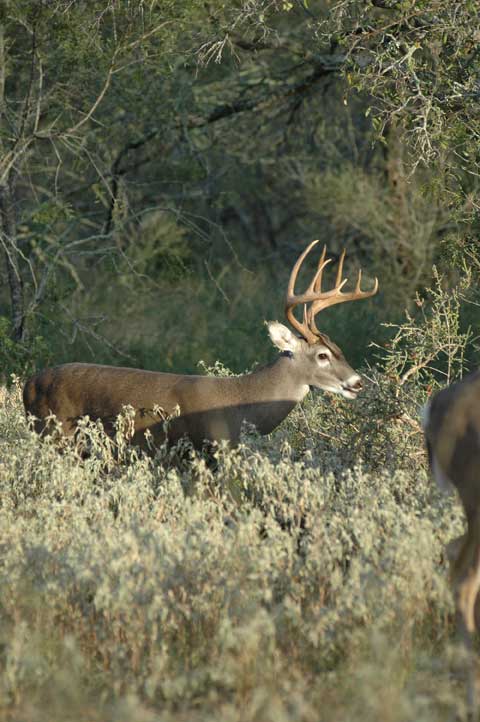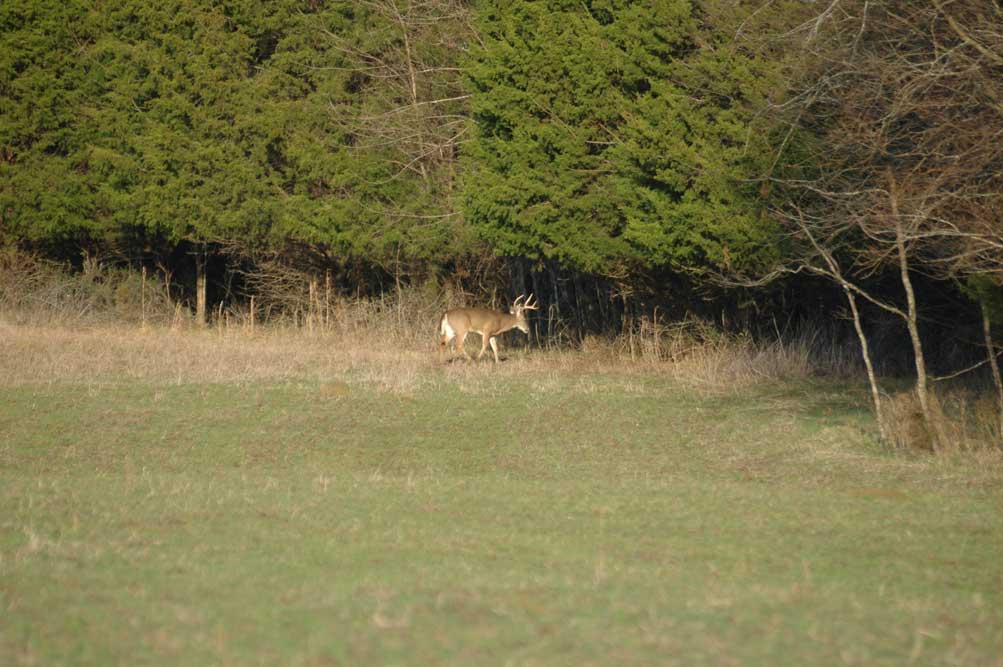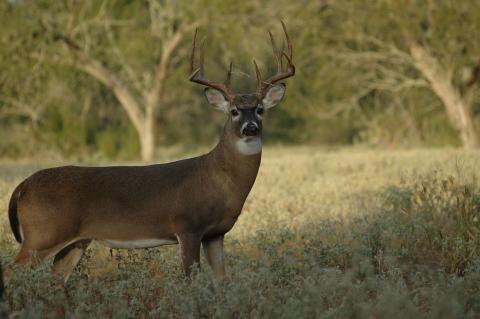Some trees may be undesirable but aren’t necessarily all bad.
Bob Humphrey
Nestled in amongst the branches of a large cedar, I was patiently awaiting the anticipated afternoon arrival of deer to the small food plot I overlooked. It did not take long for the first to arrive, not surprisingly, a button buck. The young stag skirted the far edge of the field then, rather than walking out into it, cut back into the brush and bowed his head to feed. He was soon joined by his sibling, then an anxious mother, all three feverishly feeding just inside the woodline.

It took me a moment to recognize the loud crunching sound and the reason for their reluctance to graze on the lush greenery. Dangling vertically over their heads I made out the dark seed pods of a locust, and when a sudden gust knocked a few loose, the deer were quick to find them. When a yearling doe - quite possibly a previous offspring of the older doe - arrived and attempted to join the feeding frenzy the maternal doe approached her aggressively. She was not about to share the bounty, not even with her own kin. That got me thinking, first about the aggressive nature of the deer, then that of the tree, the seeds of which they fed upon.
The honeylocust (Gleditisia triacanthos) is but one example. Once established, it can spread rapidly from seeds, forming dense thickets and out-competing and displacing other, more desirable species. Anyone who has ever unwittingly come in contact with the sharply pointed spines that grow on its branches and in clumps on its trunk will eagerly attest to its unfavorable status. But it’s not without its positive traits.
For starters, it’s a legume. Anyone familiar with food plots should recognize that term, and its application in wildlife nutrition. As alluded to in the opening passage, the bean pods are a favorite food for several species, not the least of which is white-tailed deer. The term “thickets” certainly has a positive connotation when it comes to cover, especially bedding cover that helps fawns avoid predation. Perhaps more importantly, it is a native species, at least west of the Appalachians, south from Michigan and Iowa to the Gulf Coast and west to the eastern part of the plains states, and according to the U.S. Forest Service it is naturalized east of the Appalachians from South Carolina to New England.
Before moving on it’s also worth mentioning the black locust (Robinia pseudoacacia), which like the honeylocust is also a native legume sometimes planted for its nitrogen-fixing abilities, not to mention its use for fence posts and hardwood lumber, and its flowers are a source of nectar for honeybees. All I know is if I find one in the woods, or on the edge of a food plot, I’m setting a stand nearby.

Were I intentionally looking for an aggressive native invasive during that afternoon hunt, I could have found one much closer than even the short distance across the food plot. In fact, I was concealed within the foliage of one. While it’s still tolerated over much of its native range, eastern red cedar (Juniperus virginiana), the most widely distributed coniferous tree in the Eastern United States, is looked upon less favorably where expanding its range westward into remnant grasslands, an expansion sometimes referred to as the “Green Glacier.”
MANAGE INVASIVE PLANTS FOR A VARIETY OF WILDLIFE
Its invasive status is enhanced by several traits. Cedars can form dense groves, where studies estimate they may intercept anywhere from 25% to 60% of bulk rainfall. They are also quite greedy with what water reaches the ground. Research suggests smaller ones can “drink” 6 gallons of water per day, and the largest ones can suck up as much as 13 to 16 gallons. Their flammable foliage, thin, flaky bark and oily resin make them quick to ignite, increasing fire risk.
Much of the disdain is from those who would prefer to keep the grasslands open for grazing. However, the species is not without potentially positive traits. It is extremely resistant to drought, heat, cold, salt and a wide range of soil conditions, meaning it will grow where other trees and shrubs may not. That growth can be an important source of food and cover for wildlife, and at least in the latter case, for those seeking concealment from sharp-eyed game.
While not native to North America, the lemon tree offers us a lesson. The juice of its fruit is too tangy to tolerate, but when life gives you lemons, mix in a little sugar you get lemonade. Some trees may be termed invasive because they take sunlight, soil nutrients and water away from more desirable species; and also because they’re so resistant to our efforts to eradicate them. However, if they provide food and cover to the game we pursue, perhaps those characteristics, and the trees themselves should be considered assets rather than liabilities.































